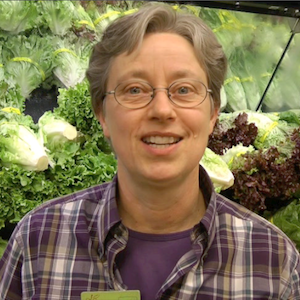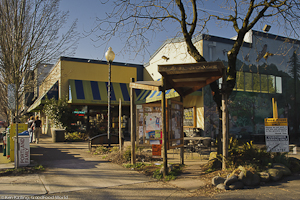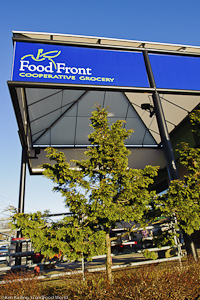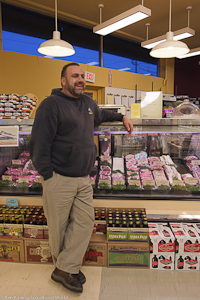Grocery retail is big business; nearly $480 billion in 2010. And the “fresh format” stores, like Whole Foods and many of the country’s natural food co-ops, saw sales increase 10.8% to $9 billion last year.(1) Obviously the American consumer is looking for healthier products and they are rewarding the retailers who sell those product lines.

There are now more than 9,000 natural products and health food stores, including food co-ops across the U.S. These range from very small shops (less than 1000 square feet) to the “supernaturals” (supermarkets who sell natural products and health foods) such as Whole Foods (270 stores), Trader Joe’s (350 stores), and large food co-ops like the PCC Natural Markets (9 stores) in Seattle.(2) Whether full-line supermarkets or small specialty or natural food stores, there are still only about 350 active retail food co-ops across the country.(3)
Large conventional groceries replicate stores across the landscape and are not so careful about reflecting local community demographics and product preferences. Natural food co-ops, because they are member-owned, take on the personalities of their surrounding neighborhoods. Food Front Co-op in Portland OR is a perfect example.
Food Front – soon to celebrate its 40th anniversary – consists of two stores; each about 6000 square feet retail space and with combined sales of about $10.5 million. A staff of 125 serves 7,000 member-owners in two very distinct neighborhoods.
Holly Jarvis, co-op general manager, said, “We expected the stores to be different, but we really didn’t know how different they would be in terms of sensibilities and product preferences.
(Take a virtual tour of Food Front Northwest and Food Front Hillsdale here.)

Food Front Northwest, located at 23rd and NW Thurman, is in a very urban, upscale part of Portland. The housing density is high and there are lots of 2-person households with no kids.
It’s a walking neighborhood; in fact, the store only has 15 parking spaces. Customers shop many times a week, sometimes daily; European-style shopping.
On the other hand, Food Front Hillsdale, in the Hillsdale Shopping Center in southwest Portland, is in a very suburban neighborhood. It’s not a walking neighborhood; this is mini-van country! There are a lot of families with kids and people shop once a week, buying lots of cow’s milk instead of soy milk. They also tend to choose products labeled local over those labeled organic.

Food Front Hillsdale was opened about 3 years ago in a suburban space that had been a grocery store since the 1940s. In the 1980s a local natural food chain, Natures, was located in the building. Natures was sold to GNC, which was then sold to Wild Oats. Whole Foods Market bought Wild Oats and closed the store.
The neighborhood was devastated with the loss of their anchor grocery store and the community looked for another grocery to move in. The space is small and old, not the kind of facility that independent retailers were looking for. A co-op seemed to be the ideal solution and Food Front worked with the neighborhood to open there.
After a year of preparation and improvements, Food Front Hillsdale opened in the fall of 2008, just in time for the economic downturn.
Never one to let challenges get her down, Jarvis has worked hard to connect the co-op stores to their respective neighborhoods. Food Front works with many community organizations and sponsors events like concerts in the park and the area’s farmers markets.
To differentiate the stores from other groceries in town, Food Front actively seeks out local producers and suppliers who share the co-ops values. And the number of small local vendors has steadily grown to more than 300. “We buy from local growers all year long,” said Jarvis. “In the summer almost all of our produce is local and direct from the farmer. We’re also willing to buy packaged goods in small quantities from suppliers who are making only a few products.”

For example, Steve Boveri, Meat and Seafood Manager, has built a meat and seafood department reminiscent of an old-fashioned butcher shop. Unlike most conventional supermarkets and even some natural food co-ops, it’s still possible to buy a single pork chop or fish for one at Food Front. No plastic-wrapped meat here! Steve is committed to buying meat direct from the grower when possible and he carefully selects a fine array of locally grown meats.
It is people like Holly and Steve that help local producers achieve their dreams of bringing a product to market and have made Food Front known as “the people to go to if you want to get your product in a retail store.”
The Food Innovation Center, a joint program of Oregon State University and Oregon Department of Agriculture, was formed to help get products grown and produced in Oregon to market. The program teaches about recipe formulation, ingredient sourcing, manufacturing, labeling, etc., but does not provide marketing instruction. A Food Front grocery manager teaches a class every quarter on how to take a product to market, including how to work with a retailer.
While Food Front has high visibility with food growers and producers, it faces tough competition for customers against New Seasons, a local chain of natural food stores. “Portland is a great place because the idea of buying local started early and went mainstream early. It’s a matter of understanding local production, not industrial production,” said Holly. “That’s where co-ops fit in; people are going back to valuing the concept of local, especially their neighborhoods and communities.”
Co-ops are especially tuned to “place,” their genesis is always the local community. Food Front’s stores will go on to become more and more distinct from each other and from the other co-ops in Portland. They are successful, because of their differences not in spite of them.
For more information, go to Food Front Co-op’s website.
________________________________________
(1) Future of Food Retailing, 2011, Willard Bishop
(2) Natural Food Merchandiser’s 2010 Market Overview
(3) National Cooperative Business Association
